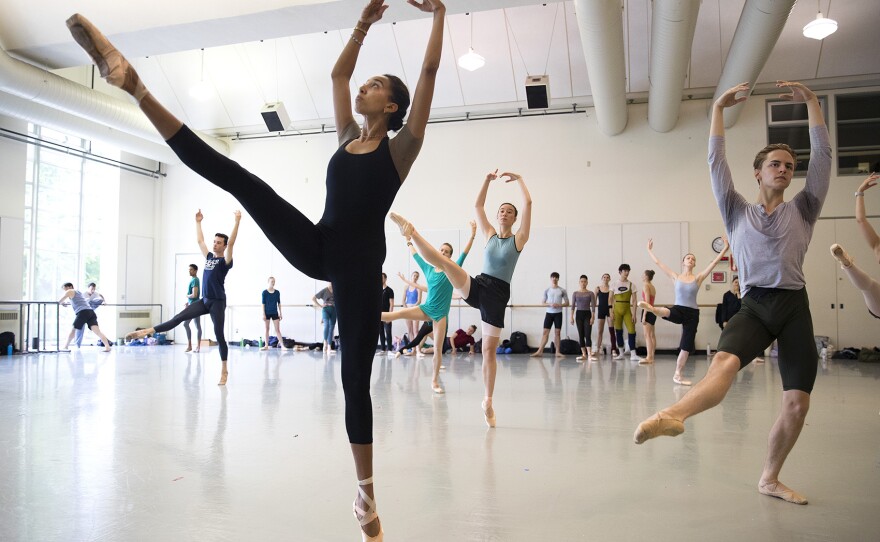You can’t miss Pacific Northwest Ballet’s Amanda Morgan. For one thing, at five-feet, ten-inches she’s one of the tallest women onstage. But more obvious is Morgan’s race. While more than 20 percent of PNB dancers are people of color, she is the only black ballerina in the company right now.
The 21-year-old powerhouse knows she’s different from traditional ballet dancers. But instead of seeking out jobs in more racially diverse dance companies like New York’s Harlem Dance Theater or Alonzo King Lines Ballet in San Francisco, Morgan plans to stay at PNB to create a dance career on her own terms.
And that includes choreographing. This weekend, her dance “Pages” premiers at McCaw Hall, part of PNB’s Next Step program for emerging choreographers in the ballet company.
Here’s Amanda Morgan’s story, as told to KUOW’s arts and culture reporter Marcie Sillman.
I grew up in south Tacoma, and I went to a small, small dance studio, above a bakery. You had to go upstairs behind this alleyway to get in.
My mom tells this story about me: When she was pregnant with me, she’d put classical music near her belly and I started kicking. I have just always loved dancing, It’s part of me.
I wish I could show you a picture of me when I was young — this tiny torso, legs that went on and on. I had knock knees. I looked like a baby horse! It didn’t occur to me that I wasn’t the right look until I went to the School of American Ballet. I never felt people stare at me before. Then at that audition, I remember I went in and felt all these eyes. I was like, oh my gosh. What have I gotten myself into?
I love it here at PNB, but when I was in school and I didn’t see a black girl in the company, that was really hard for me. I remember sitting down in the audience with my friends, at Swan Lake. They were like, ‘Oh, I look like this one, I look like that one.’ I went into the bathroom and cried. I thought, I will never be in this company, because I look like no one here. Then I got out of that mindset. If there’s no one here like me, why not change that? I’ll be the first.
I’m gonna be honest with you. I don’t think there’s a dancer out there like me. I think I’m very different. That’s a great thing, but it’s also bad, because you don’t get used. That pushed me to choreograph. I grew up here with the Next Step program. Seeing that process, I thought, I want to make my own thing, to know what it’s like to stand in the front of the room.
When I was younger, I asked myself, why am I putting myself through so much when I could go somewhere where I already fit in, and it would be so easy? Then, I thought, who is that going to benefit? Who am I going to be helping? I was really thinking about that last winter during Nutcracker. There was a little black girl, dancing the role of Clara. I saw the way she looked at me. Some other little girl came up to me and said, ‘You’re her favorite dancer!’ That’s really why I have to stay here, because my career it not just me.
https://youtu.be/Np2pkHwcL4E









